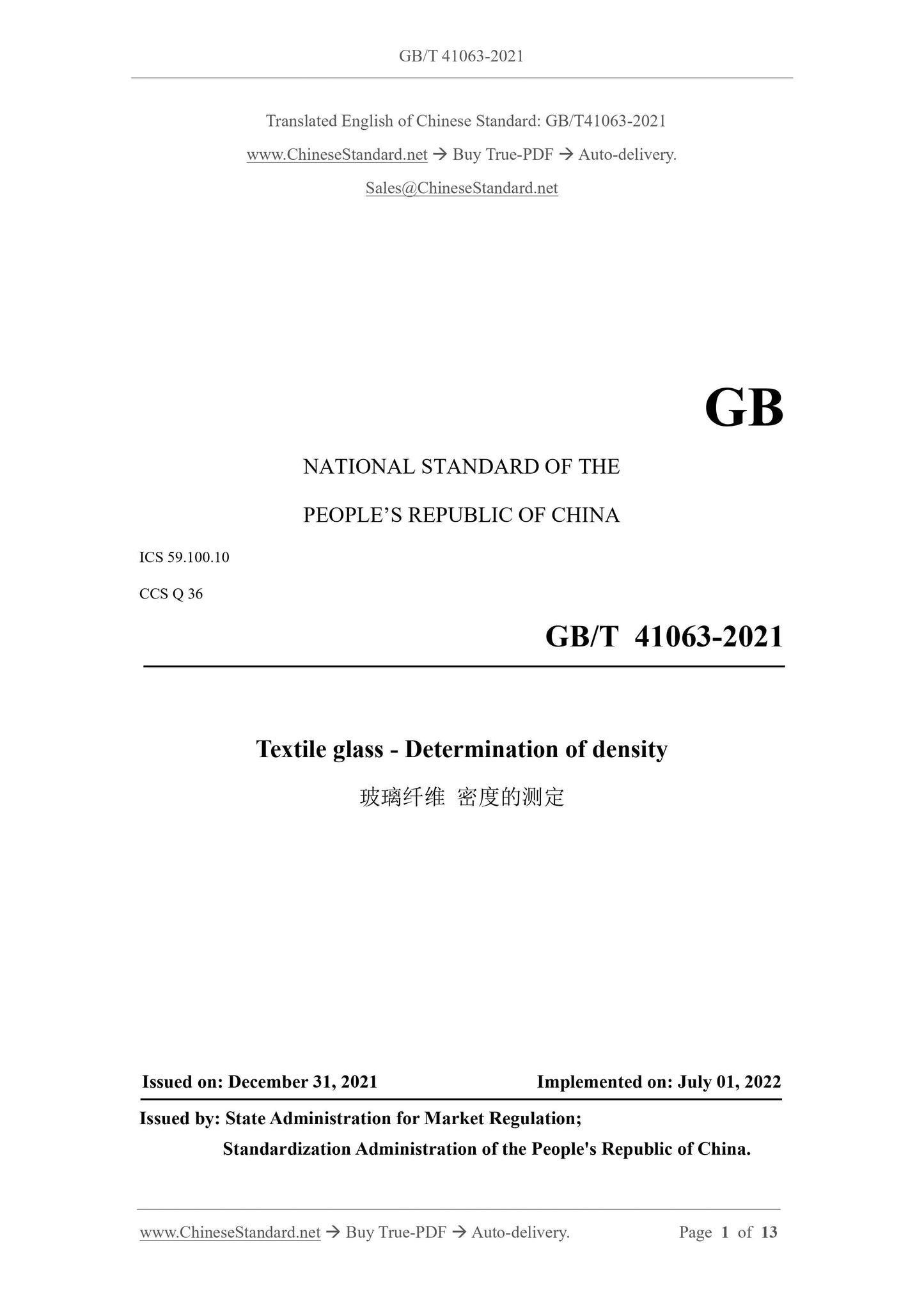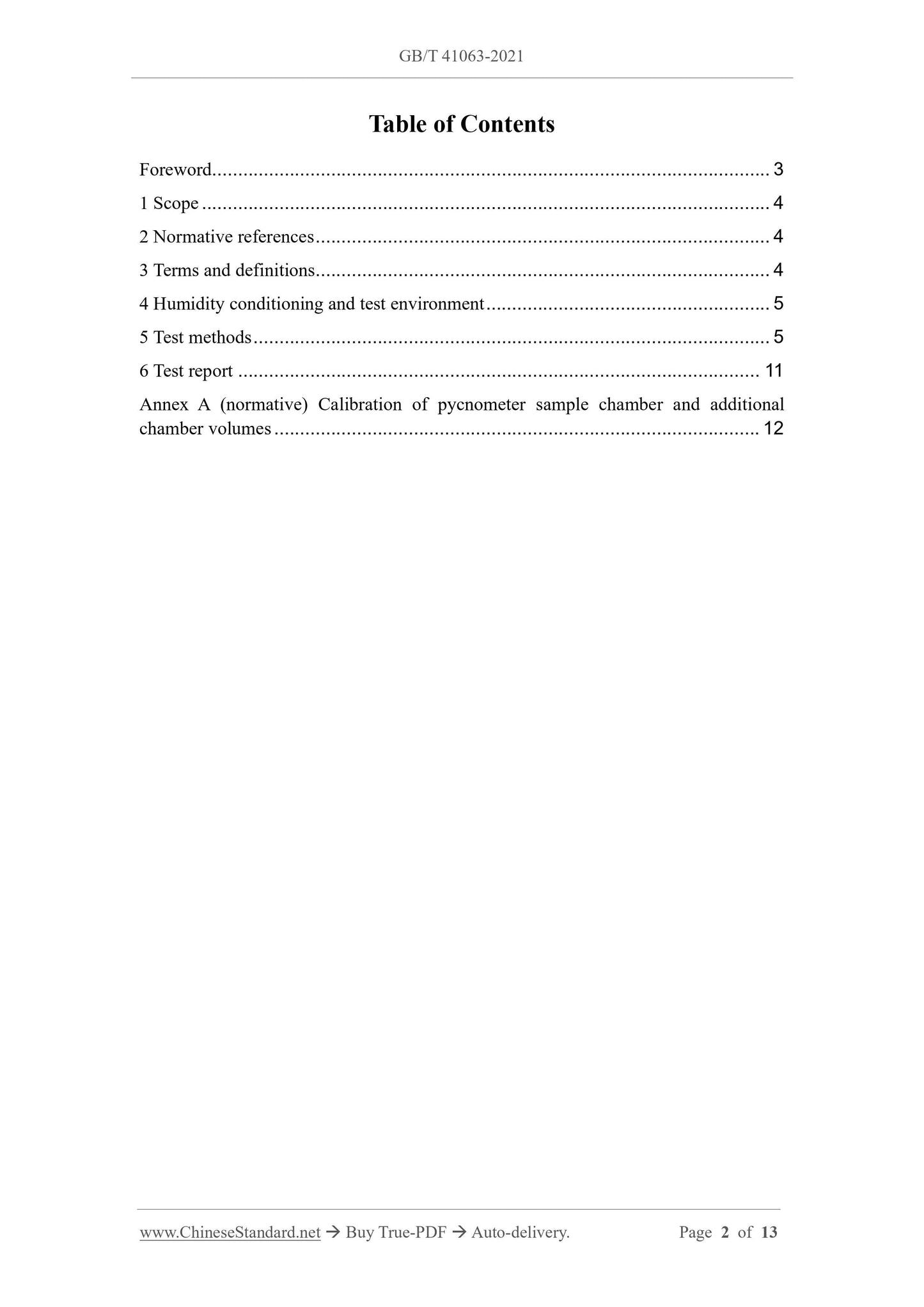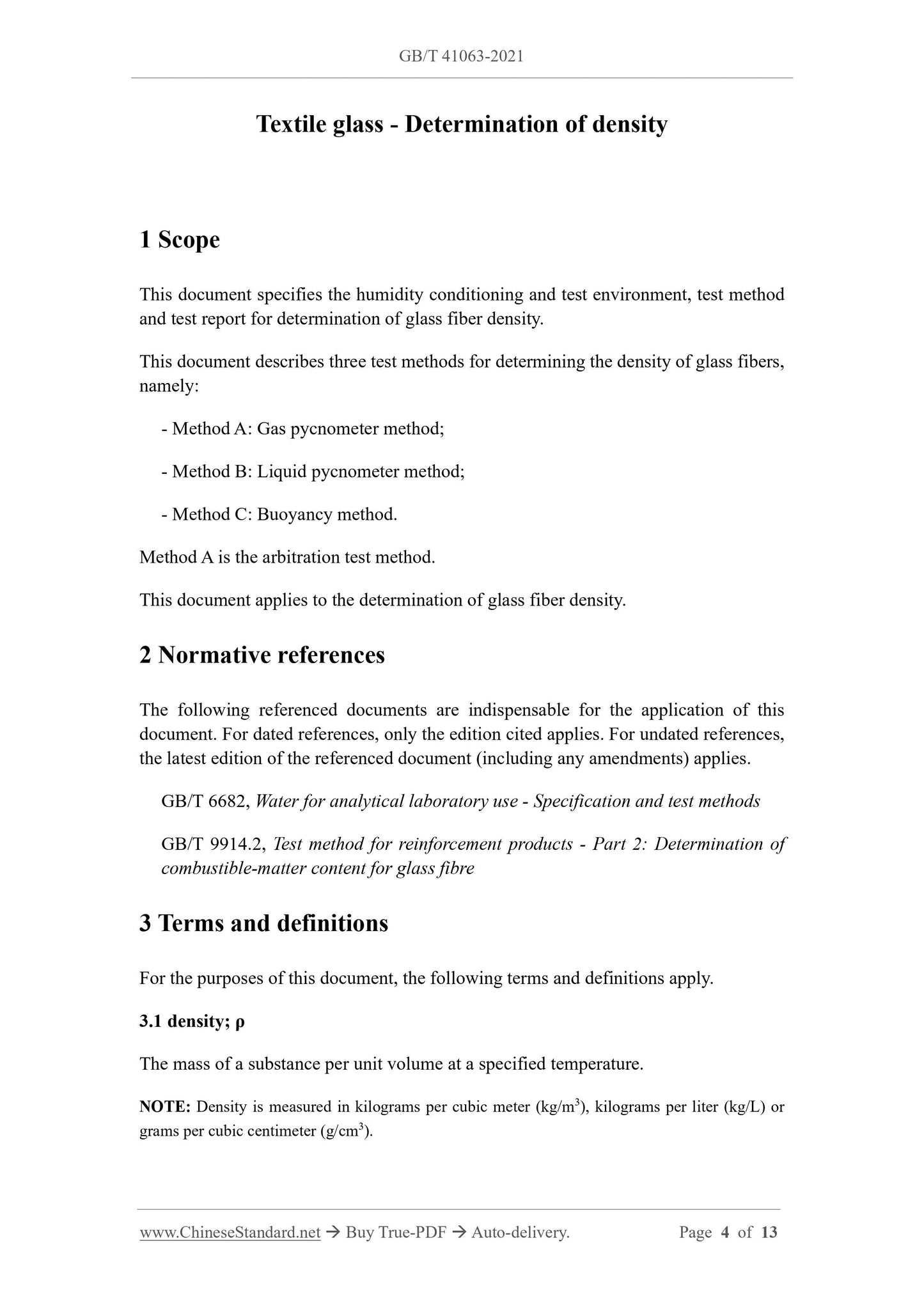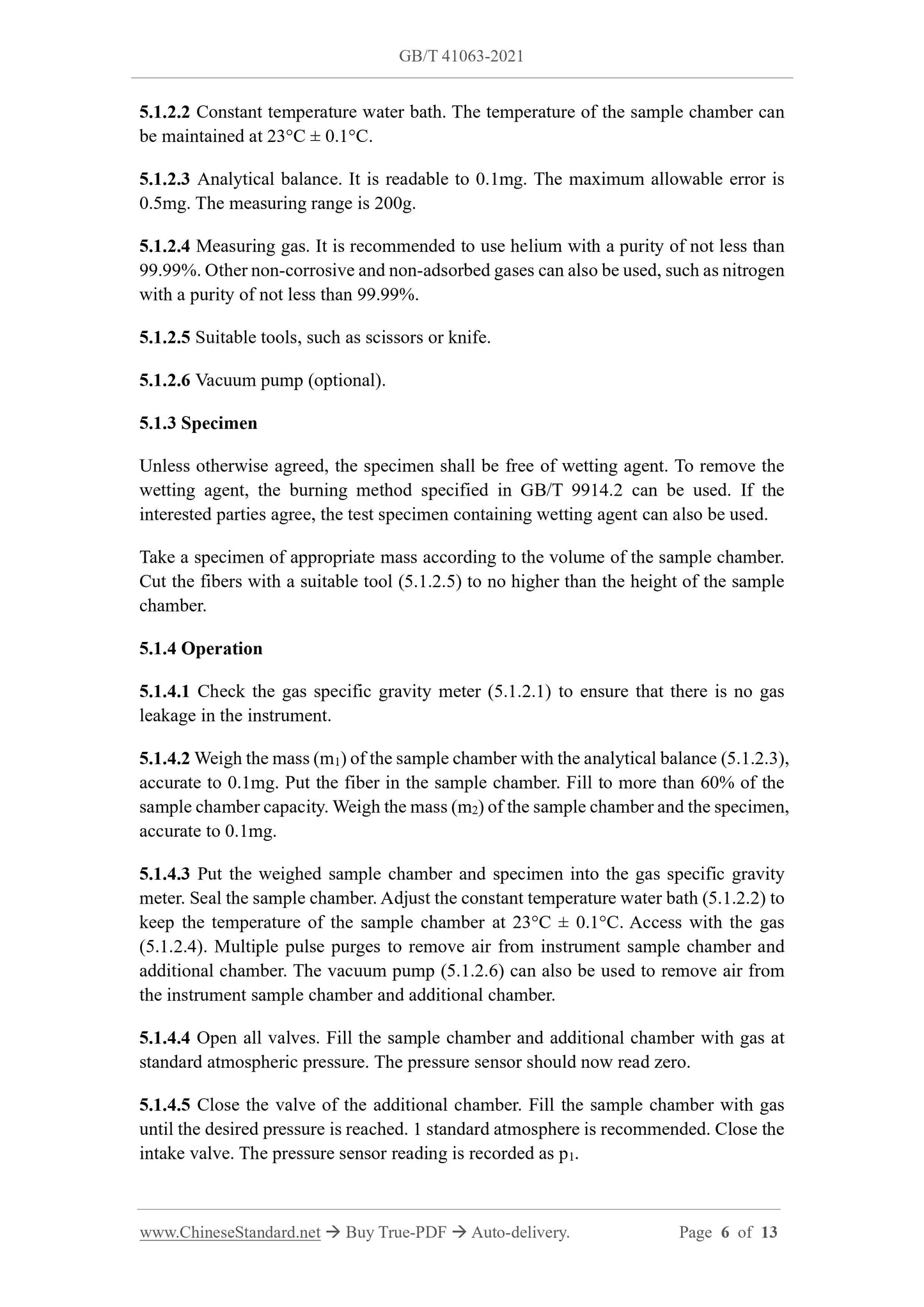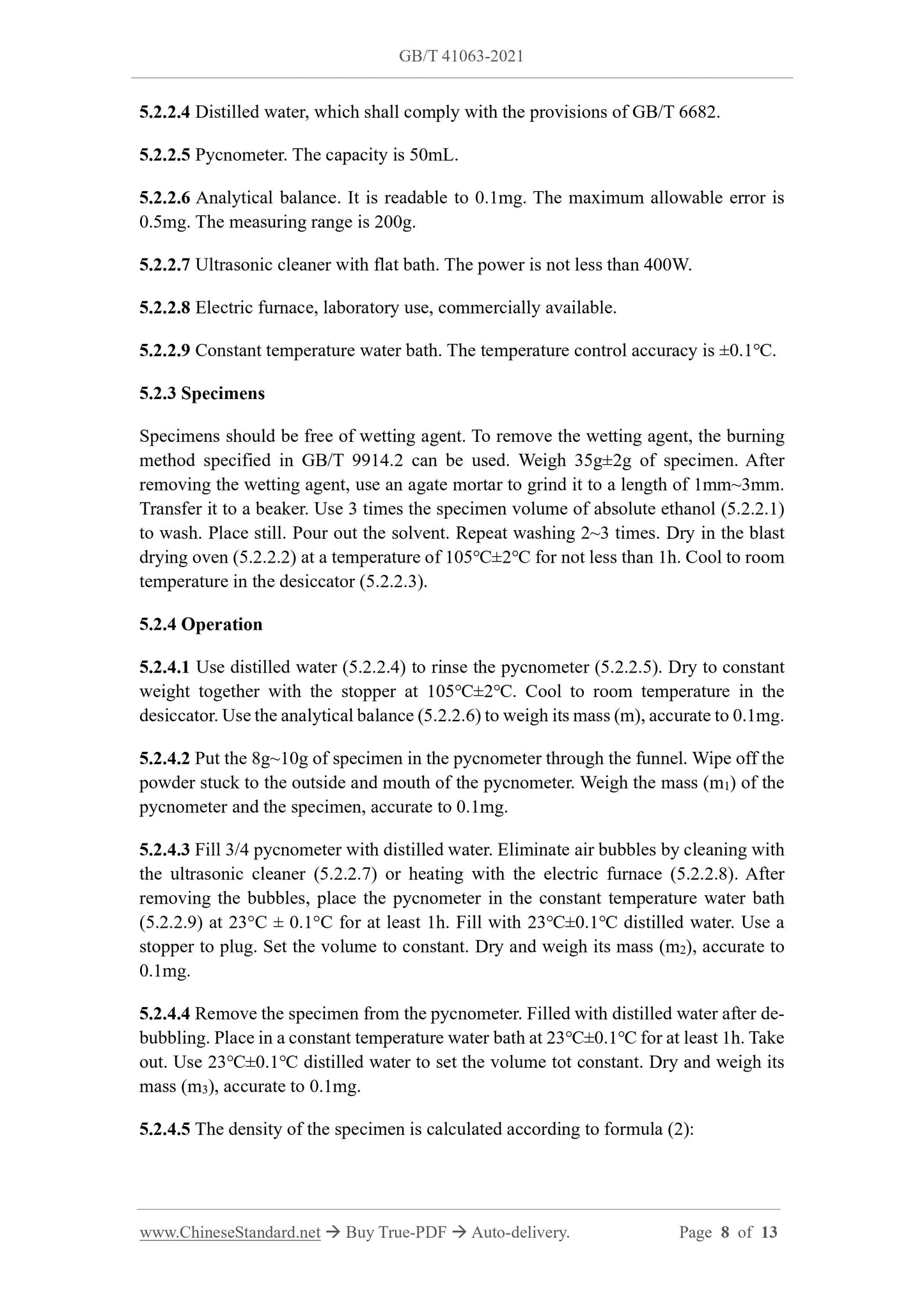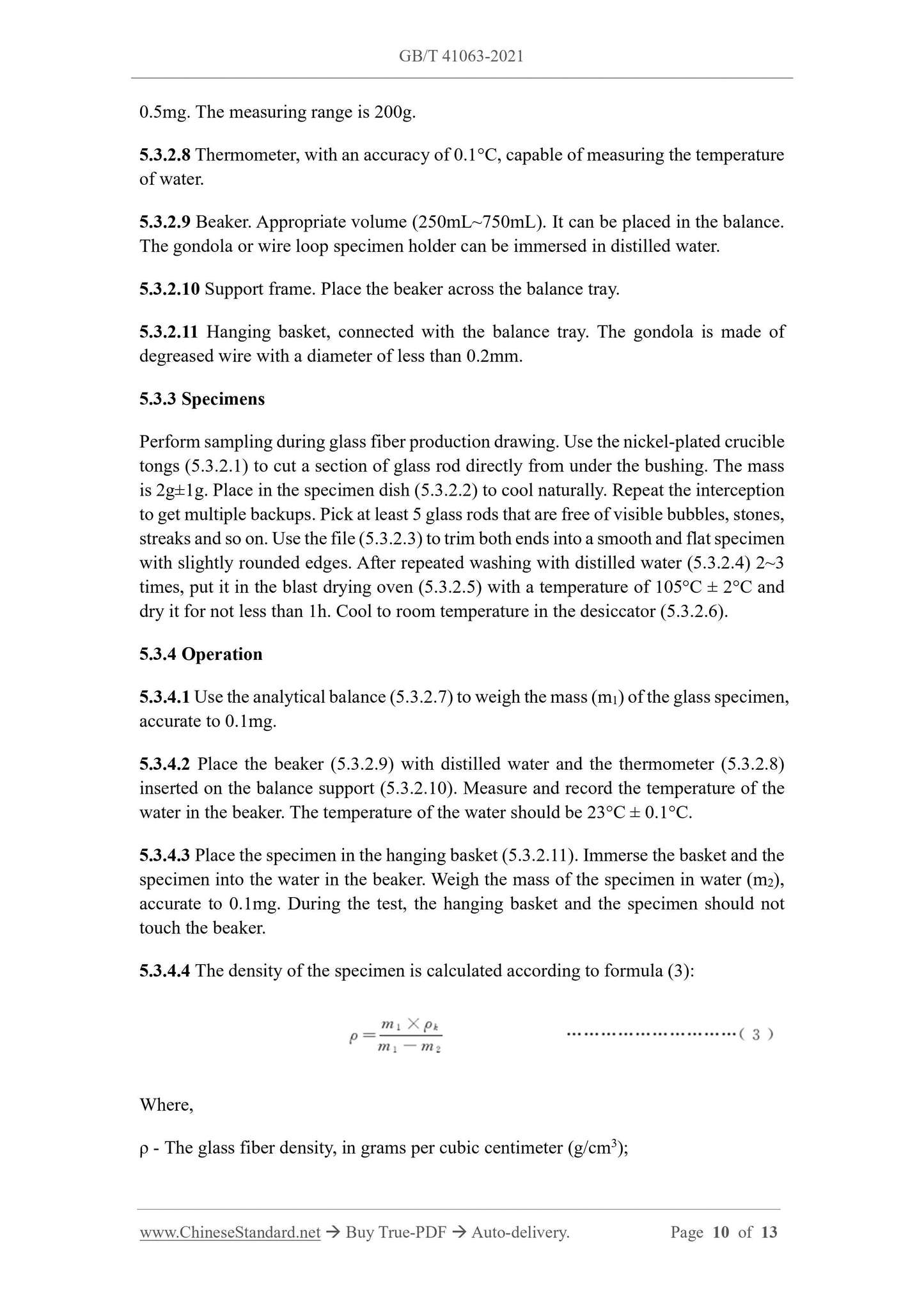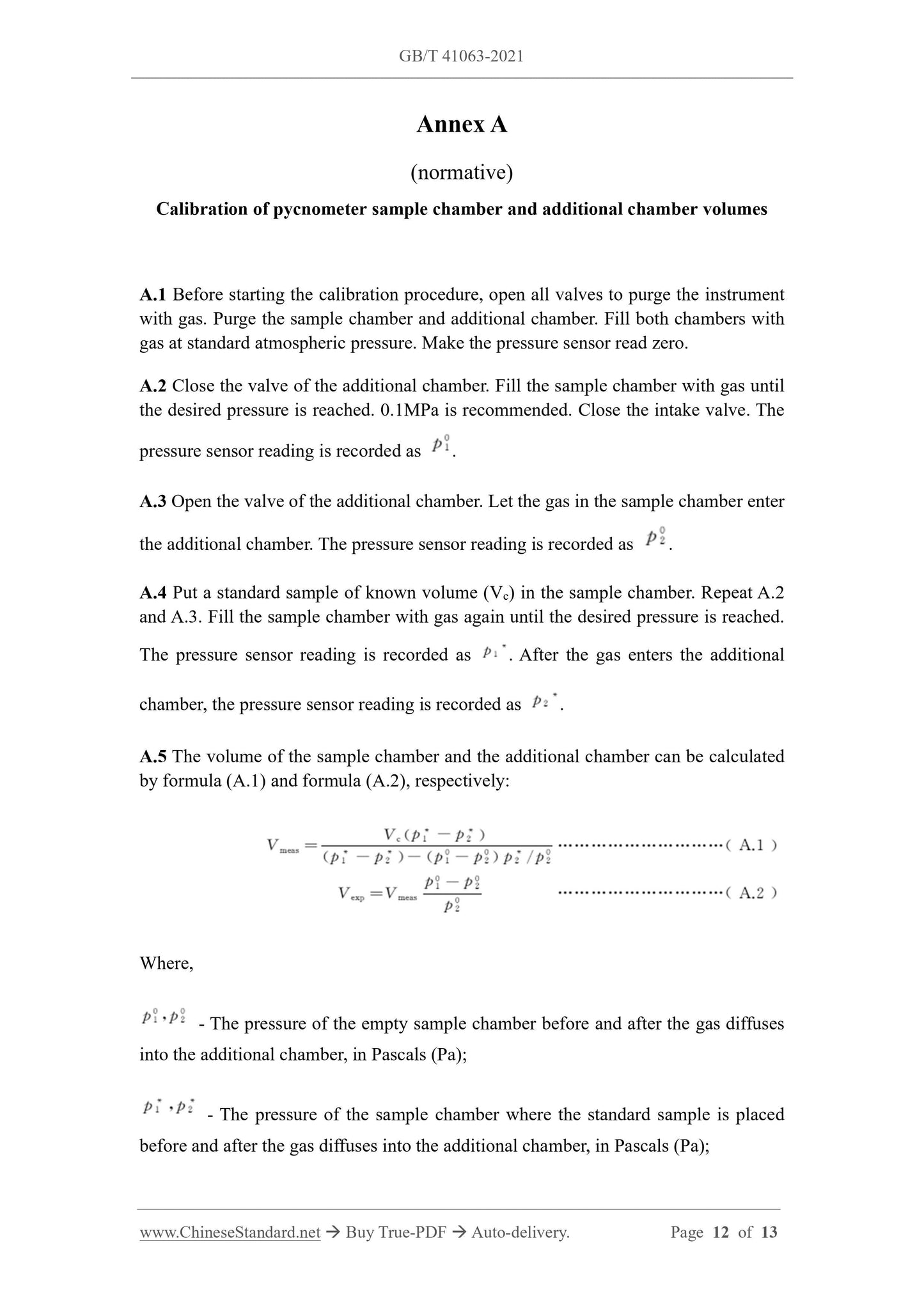1
/
of
7
www.ChineseStandard.us -- Field Test Asia Pte. Ltd.
GB/T 41063-2021 English PDF (GB/T41063-2021)
GB/T 41063-2021 English PDF (GB/T41063-2021)
Regular price
$170.00
Regular price
Sale price
$170.00
Unit price
/
per
Shipping calculated at checkout.
Couldn't load pickup availability
GB/T 41063-2021: Textile glass - Determination of density
Delivery: 9 seconds. Download (and Email) true-PDF + Invoice.Get Quotation: Click GB/T 41063-2021 (Self-service in 1-minute)
Newer / historical versions: GB/T 41063-2021
Preview True-PDF
Scope
This document specifies the humidity conditioning and test environment, test methodand test report for determination of glass fiber density.
This document describes three test methods for determining the density of glass fibers,
namely:
- Method A: Gas pycnometer method;
- Method B: Liquid pycnometer method;
- Method C: Buoyancy method.
Method A is the arbitration test method.
This document applies to the determination of glass fiber density.
Basic Data
| Standard ID | GB/T 41063-2021 (GB/T41063-2021) |
| Description (Translated English) | Textile glass - Determination of density |
| Sector / Industry | National Standard (Recommended) |
| Classification of Chinese Standard | Q36 |
| Word Count Estimation | 8,862 |
| Issuing agency(ies) | State Administration for Market Regulation, China National Standardization Administration |
Share
